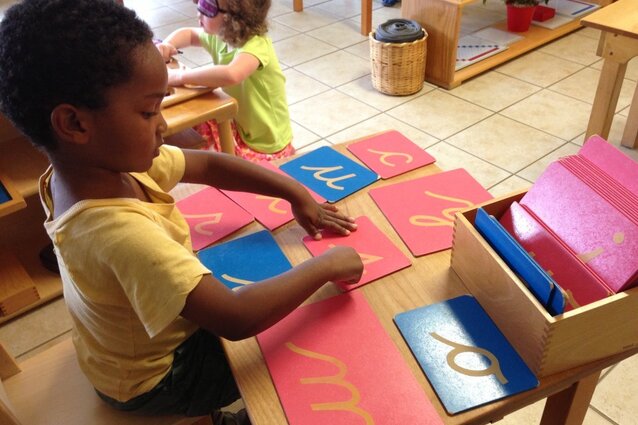
Ride the Horse
— Werner Erhard“Ride the horse in the direction it’s going.”
Not a bad summation of Montessori theory and practice, if one has to try to encapsulate it in one sentence.
Maria Montessori, Italy’s first female medical doctor, developed a revolutionary approach to education by applying a scientific approach rooted in observation. As a physician, student of philosophy, psychology, and anthropology, she brought her scientific methodology and relentless curiosity to observation of and experimental research with disadvantaged and mentally challenged children in the slums of Rome in the early 20th century.
And as it happens, all children benefit from the curriculum and methods she developed over 100 years ago. By engaging in a continuous loop of observation, experimentation, assessment, and modification, and through her life-long work with children of various socio-economic backgrounds around the world, Dr. Montessori observed some universal truths.
She observed that among human beings of all ages, regardless of cultural background, there are some universal tendencies that hold true. These Human Tendencies include the need for activity or work; self-preservation/self-development; orientation; order; exploration; communication; abstraction & imagination; concentration/repetition/self-perfection; and exactness & precision.
And young humans – birth through age six – have unique developmental motivations that unconsciously, irresistibly drive their attainment of specific abilities or characteristics. Dr. Montessori called these Sensitive Periods. She identified four Sensitive Periods: for coordination of movement; order; language; and the development & refinement of sensory perception. A good analogy is that of a “window of opportunity” during which the young child has a particular drive and facility for achieving these developmental goals. How many times have we seen a toddler repeatedly climb up and down a flight of stairs? Or think about how children from birth learn to communicate: they effortlessly absorb the language in which they are immersed.
So it makes sense that so many of us struggled with second-language instruction in high school: the sensitive-period “window” for language acquisition closes at around age six. This doesn’t mean we can’t become fluent in a second language at an older age – many of us do – but it means there’s an awful lot of hard work involved, and we’re not likely to ever be as fluent as the speaker who acquires the language as a young child.
The revolutionary thing about Dr. Montessori’s method is that it is attuned to the developmental needs and drives at each stage of development. Instead of creating an educational theory, then forcing a square peg in a round hole, she observed what resonated with children and developed an approach to support their academic, social, emotional, and spiritual development in harmony with what is already driving children developmentally. In essence, she designed a curriculum to ride the developmental horse in the direction it’s going.
Hopefully we can move toward an educational system in which this is the norm rather than the exception.
— Maria Montessori, The Absorbent Mind“The child’s conquest of independence begins with his first introduction to life. While he is developing, he perfects himself and overcomes every obstacle that he finds in his path. A vital force is active within him, and this guides his efforts towards their goal.”
